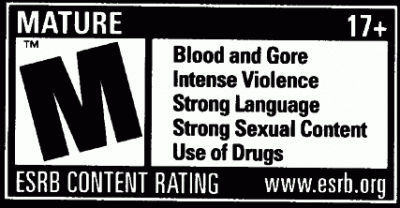Previously published for Secular Shethinkers
Can we all just stop acting like trigger warnings are outrageously complicated?
I keep seeing scare-tactic articles from mainstream and feminist blogs trying to have a Very Serious Discussion about whether trigger warnings are warranted or have “gone too far”. And you know what? I’m not even going to dignify this “debate” by pointing out why trigger warnings are a reasonable accommodation for people who have survived traumatic events. There are already plenty of articles about that.
Instead, I want to talk about how trigger warnings have already existed long before the terminology, they just went unnoticed by people who didn’t need them.
We’ve all watched a TV show that began with a “Viewer Discretion is Advised” disclaimer. And while I personally might think a warning about something like The Simpsons is a little goofy, it doesn’t harm me at all for them to give other viewers a heads up. I haven’t been inconvenienced by it, and by the time the episode is over, chances are good I’ll have forgotten all about it. And that’s my point. Trigger warnings (or advisory warnings or content notes or whatever you want to call them) don’t exist for the people who don’t need them. They exist for the people who do need them.
Most forms of media have an industry-enforced and regulated rating system of some kind firmly established. Movies, television, comic books, and video games all have some kind of rating that can be found before viewing or purchasing, and most even have little details about what warrants that particular rating (although some would argue they need to be more specific, which I think is valid). So it’s no surprise that blogs developed their own form of “ratings system”.
Popular blog providers like WordPress or Blogger allow you to mark your content as mature, but feminists and other advocates have gone one step further and now have specific heads-up when the content being discussed is something that might trigger traumatic experiences of their readers. But unlike the industry ratings mentioned, which have historically been imposed by only one organization founded by big-name publishers and thus, carry some valid concerns about when ratings are a form of censorship to punish indie publishers, trigger warnings are voluntarily given by the creators of their blogs.
And hey, confession time, I don’t always include a trigger warning on my blog posts. If I think my title sufficiently explains the topic at hand, I figure that’s a good enough heads up for my readers. But if one of my readers or friends says, “Hey, I think this needs a trigger warning,” then I apologize and put up a damn trigger warning. It takes very little time for me to edit a post and add one. So why would I waste more time complaining and debating about it when it shouldn’t even bother me in the first place?
So now let’s talk about the latest scare going around: trigger warnings moving into classrooms. This is another “issue” that mainstream media is making out to be new, even though they’ve already existed in a different form (as a detailed syllabus) for quite some time.
Every class I have ever taken, both at my woman’s university and at my previous community college, has issued a trigger warning whenever the next lecture was going to discuss abuse or rape or other generally sensitive subjects. It is already known, by professors if not by administration, that a significant proportion of women (who make up a majority of college students now) have experienced abuse and/or rape first-hand and therefore, probably would appreciate a heads up about it.
I have been triggered before. It is embarrassing and extremely vulnerable and not something I would ever want to happen in public if I could avoid it. And thankfully it has never happened from participating in a class with a trigger warning. Why? Because the syllabus and professor gave me a heads-up so I wasn’t blind-sided!
“Oh, we’re going to discuss abuse next week? Alright, well I better build up my emotional constitution that day so I can handle it, because I want to be able to help others in that situation in the future.”
“Oh, we’re going to discuss rape tomorrow? I don’t think I can deal with that right now, so I’ll ask my friend ahead of time if I can copy her notes. Thank glob I don’t have to divulge personal information to my professor in order to not be viewed as an irresponsible student.”
One line in the syllabus, one nod from the professor before the next lecture. Not. Fucking. Difficult.
The only trigger warnings I notice are those that are relevant to me, but over time I have learned to include other common triggers through my interactions with others. And I think this is at the root of what makes people get so upset about trigger warnings (that they don’t need or notice).
In order to include trigger warnings not relevant to ourselves, we have to think about how something we’re writing might affect someone else negatively. And that involves checking our own privileges, which we all know makes people defensive and uncomfortable. But my discomfort from being wrong is minor compared to someone else being triggered. So whenever someone asks me to, I pull up my big girl panties and correct myself.
Because that’s how we improve the world for everyone: admit when you’re wrong and correct your behavior.
Honestly to me, complaining about trigger warnings in classrooms or anywhere else is like complaining about wheelchair ramps or signs written in braille. It’s mean-spirited and a waste of time complaining about something that, obviously, does not concern you. So move on with your life and find something that’s actually worth debating and fighting over.



